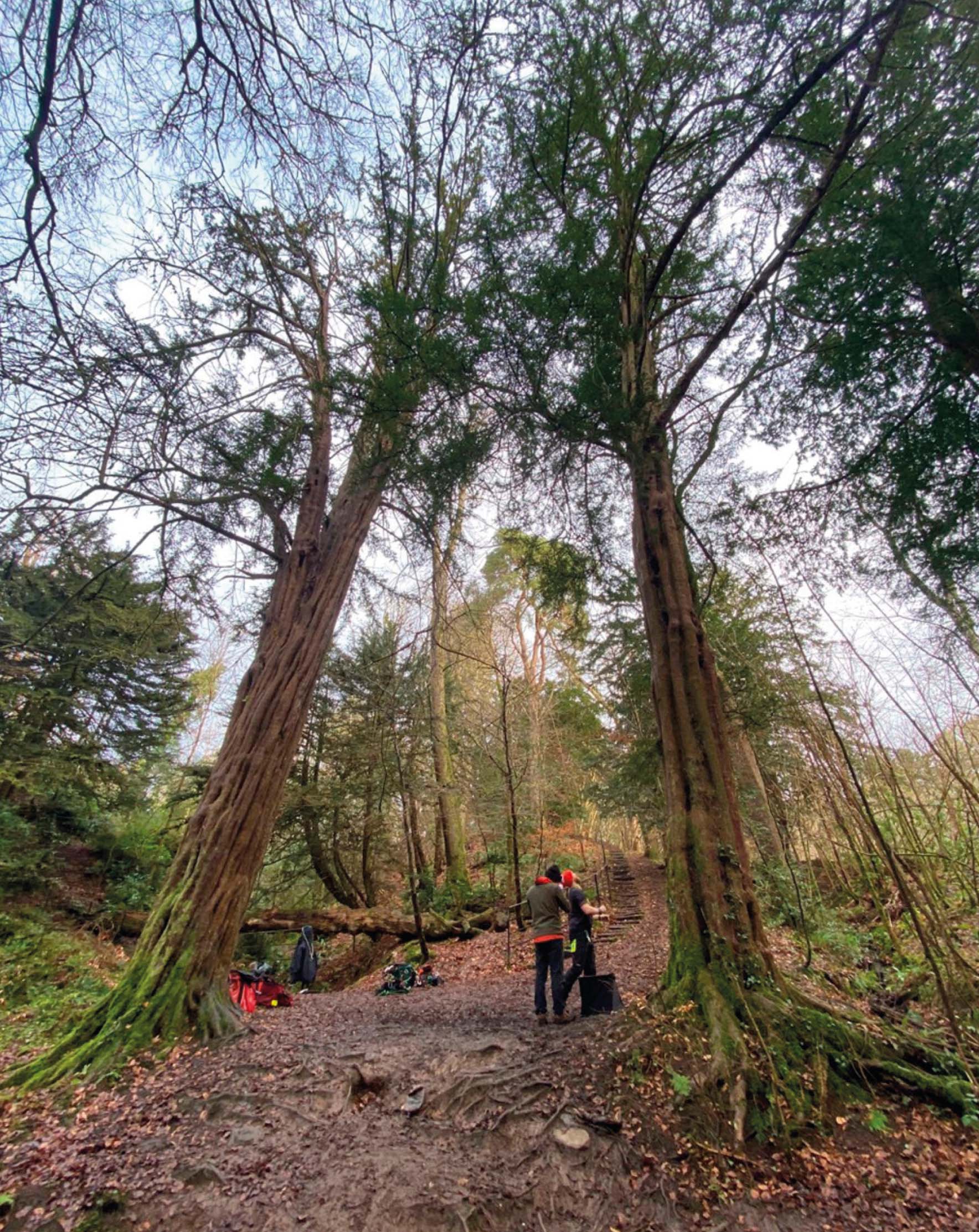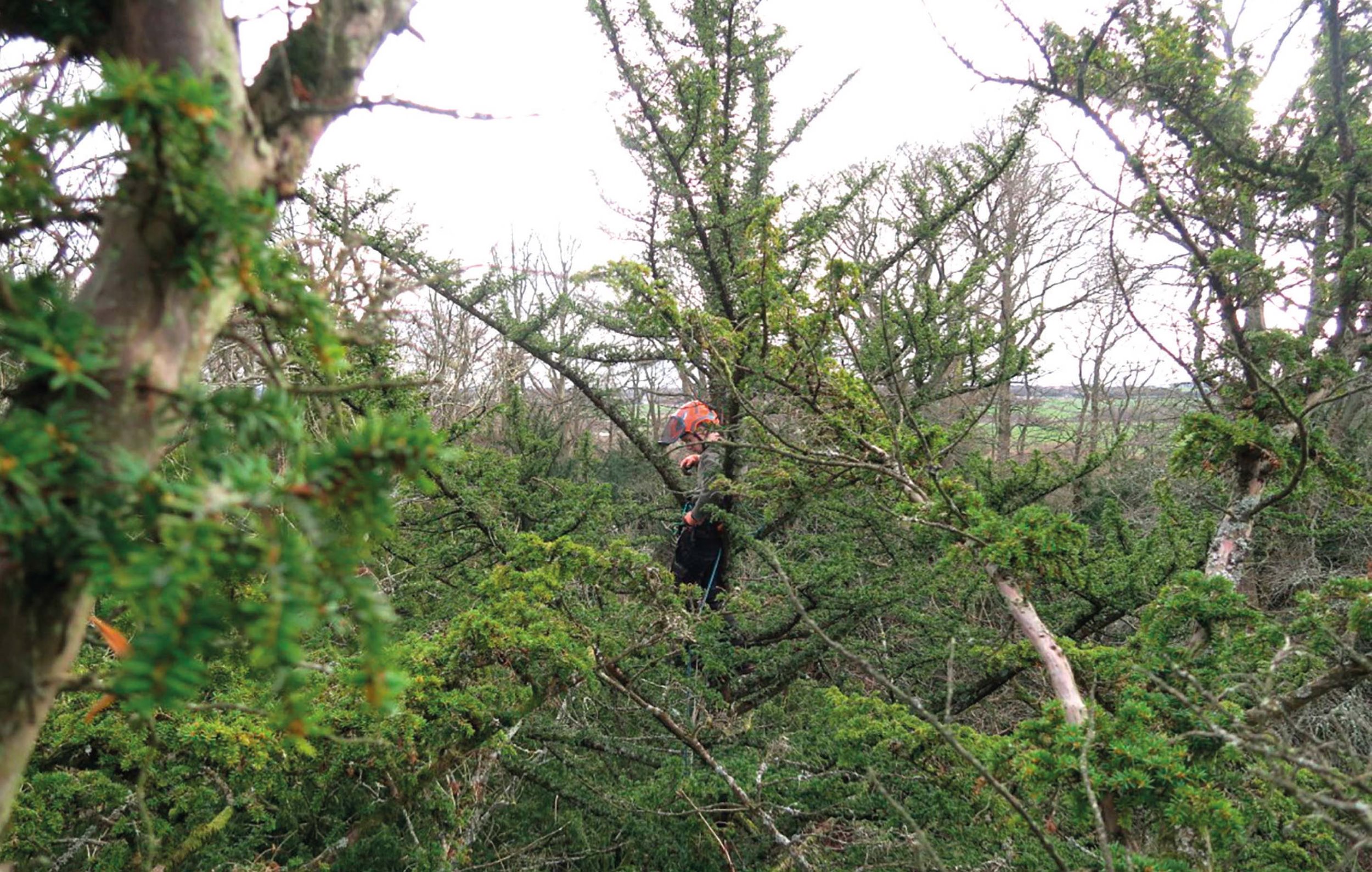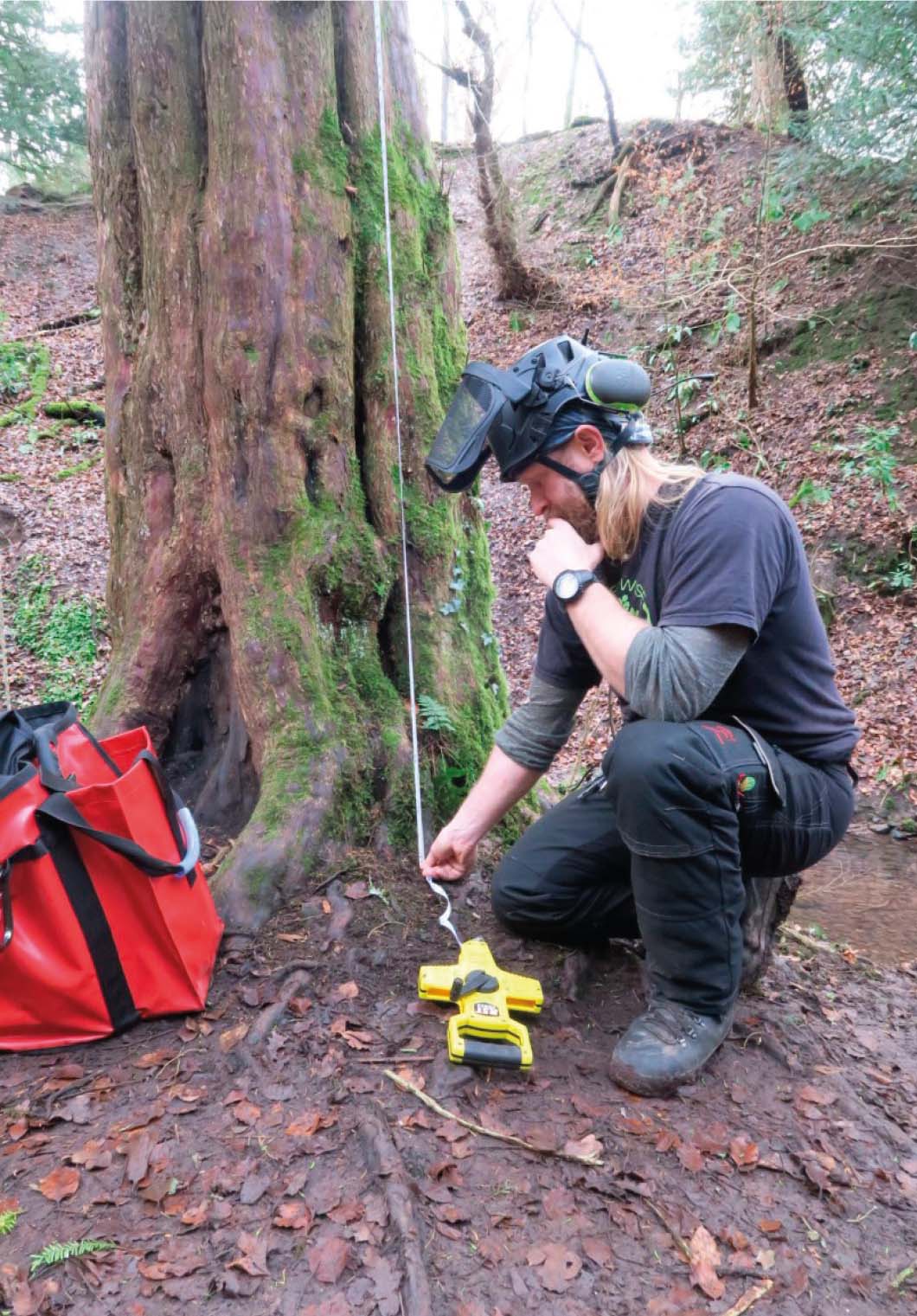Dalzell yews measure up to be the tallest in Europe
David Treanor with additional content by Mark Foster

The Scottish Branch organised a peripatetic tour of the Dalzell Estate in Motherwell, North Lanarkshire, hosted by Maxine Ross in November 2021.
Maxine introduced the group to the Covenanter’s oak (Quercus robur) which is said to have been planted 800 years ago by King David I as part of a deer park and hunting estate, making it a contemporary of the oaks over the River Clyde at Cadzow. The conversation then turned to the historical context of the significant and numerous yew (Taxus baccata) trees on site.
After bowyers in Scandinavia discovered the composite benefits of yew sapwood and heartwood around 300 AD, the technology of longbows developed to give archers pointblank armour-piercing power and a range of up to 300m. Over the next 1000 years the yew longbow played a key role in the forging of a world order which eventually gave rise to the British Empire. Demand for yew staves led to the depletion of native British stock and the subsequent import of a slower-growing and therefore superior continental supply from Italy, Spain and Albania.
The extensive stand of yew trees planted at Dalzell Estate seemingly matured into obsolescence with the decree by Elizabeth I in 1595 that the army was to replace its longbows with shotguns despite the relative inferiority of firearms at the time. This is only conjecture since it is not known exactly when they were planted or for what reason.
Maxine, who has studied yew trees specifically, went on to offer an intuitively compelling theory that Irish yew is a mutation resulting from fire-damaged yew trees.
A more light-hearted discussion on the entheogenic properties of yew pollen and its potential link to religious mythology followed. Could this be the reason why in some languages the root meaning of the word for a yew tree is ‘the Tree of God’?
Esau and Jacob
During the walk we encountered two especially impressive yews planted together on a riverbank at the foot of a bowl-like geological depression. The observation of these trees within this unique location gave rise to a spontaneous discussion within the group about their relatively tall appearance. This led to Mark Foster of the Arboricultural Association volunteering to return to measure their height.
Maxine explained to the group that the trees were named after the twins Jacob and Esau from the book of Genesis. Esau is the girthier and apparently taller of the two trees and received our focus when we revisited to measure its height a few months later.


Mark and I attended the location in late January with Douglas Crawford, a young apprentice arborist whom I had encouraged to come along for the experience; I explained to him that time spent with trees where there are no cutting tools present is a healthy and necessary way to reconnect with your original motivating love of nature.
As we arrived on site, the nurturing sound of the river accompanied by a wee bird flying out in full song signified a hope for the forthcoming springtime beyond what had seemed like a long dark winter break. Mark climbed Esau and I passed up the measuring instruments, while Douglas suggested that he climb Jacob just for the practice.
As I tightened the tape at the base of the tree, I was surprised to find that it was going to be close to 30m. That seemed extremely tall for a yew tree. Not expecting this, we hadn’t carried out any research into the tallest yew tree in Britain prior to the visit.
After consulting Google, we found that the current record for a champion yew was held by a tree in the garden of Belvoir Castle in Leicestershire which measured 28.4m in 1987. As I read this out loud to the two climbers, I discovered the Belvoir Castle yew was also thought to be the tallest in Europe.
A champion tree is the best of its kind in its area. The most common reasons why a tree may become a champion are if it is the tallest or the one with the thickest trunk, but there are other reasons too – age, most spreading, the heaviest and even for its outstanding beauty. The Champion Tree Register of Britain and Ireland (TROBI) exists to document all these trees. An excellent book is available as well as a full database online, but this needs constant updating as trees grow and new champions are found. I encourage everyone to get involved by having a look at the registered trees in your area and finding the inspiration to get involved with champion trees.
Suddenly our task took on some serious significance: Esau could be the tallest in Europe – a fitting status for the first-born twin. We checked and double-checked the result as the tape read 29.5m, over 1m taller!
As I called to Douglas to pull up his rope, the story of the apprentice pillar at Roslyn Chapel entered my thoughts where despite years of dedicated application to his craft the more experienced stonemason is overshadowed by the youthful enthusiasm of the apprentice. Could the apprentice’s yew tree be taller still? Just as in the Biblical tale, Douglas’s yew tree, Jacob, had grasped the heel and stolen the status of his brother Esau, measuring in at 29.8m.
It was an unexpectedly rewarding experience for all three arborists and a particularly significant boost for the young apprentice.
The Dalzell yews have been registered with TROBI and some more projects sit in the pipeline. Mark Foster would like to thank David Alderman with his assistance so far. It was a pleasure to tell the story of Jacob and Esau and be able to register their mighty existence. Special thanks also to Maxine for the introduction.
This article was taken from Issue 197 Summer 2022 of the ARB Magazine, which is available to view free to members by simply logging in to the website and viewing your profile area.
